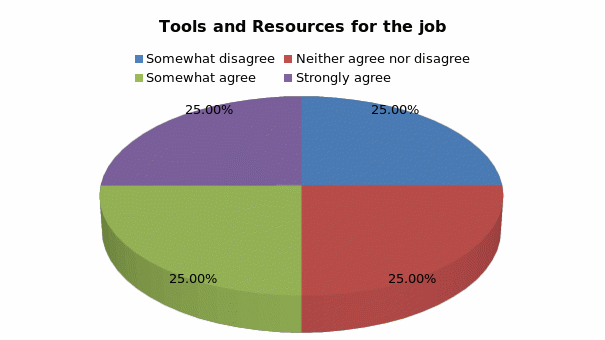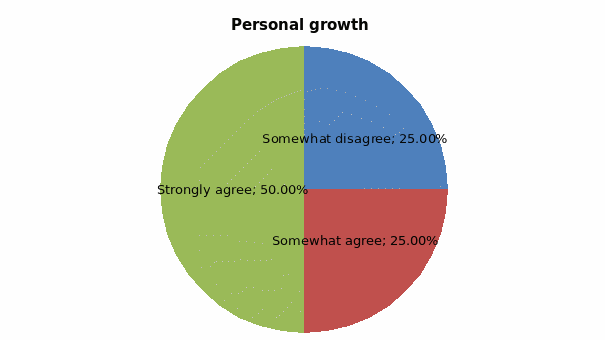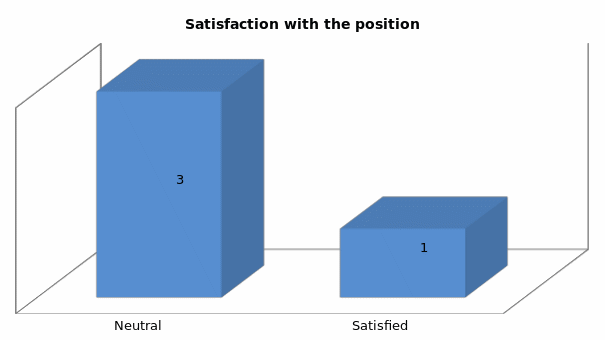Summary
The purpose of this research was to answer the question of whether higher intensity onboarding programs that incorporate all six institutionalized approaches to socialization more effective than lower intensity onboarding programs at creating better employee fit. Organizations often face challenges with newly recruited employees, particularly when determining their organizational fit within the first few months.
In most cases, newly hired employees experience job transition within the first four months after employment while others may fail to meet organizational expectations in less than two years. Organizations, however, can improve on such outcomes.
Human resource departments can counteract such issues by developing and implementing vigorous onboarding programs for newly hired employees. Past studies have demonstrated that onboarding programs assist new hires to cope with social requirements and performance expectations at their new organizations. Such programs ensure that new employees can quickly become productive, develop social bonds and contribute positively to organizational strategic goals.
Data for the research were collected from 4 employees at ABC Company. The survey questions covered three critical areas. The first section of the survey questionnaire covered Employee Job Satisfaction. The second section explored Employee Job Satisfaction—Job Passion and Self-Evaluation while the last section of the survey questionnaire covered Employee Retention at the company.
Data analysis showed that all six dimensions of social tactics had positive relationships with organizational fit, and they could reduce new hires rates of turnover. Thus, the study hypothesis accepted. It was concluded that higher intensity onboarding programs that incorporate all six institutionalized approaches to socialization were more effective than lower intensity onboarding programs at creating better employee fit.
The research results provided practical implications for human resource departments to develop effective onboarding programs and apply them in training of new hires. Such programs should be realistic and meet new hires’ expectations to eliminate anxiety, increase job performance and reduce turnovers associated with new employees.
Introduction
The major objective of any new employee onboarding programs are to enhance new employee performance and ensure optimal levels of fit for the job and within the company. Generally, it has been observed that effective employee fit enhances “job satisfaction and organizational commitment, and at the same time, reducing cases of employee turnover”.
Today, organizations seek to hire the best talents who also innovative and reflect job satisfaction as a component of fit. Thus, onboarding programs have been used to promote employee fit across industries. While onboarding programs are relatively new, new studies have shown that they are highly effective for maximizing success.
The research seeks to explore whether higher intensity onboarding programs are more effective than lower intensity onboarding programs at creating better employee fit. Theoretical concepts on onboarding programs and empirical study will guide this research by using the case of ABC Company.
Employers well understand high costs associated with high rates of employee turnover. For instance, costs are incurred when employers recruit, select, hire and train new employees. In addition, when such employees leave their jobs, it results in low personnel and, therefore, other employees are required to sustain high productivity.
Based on the nature of training, remaining employees are required to train newly hired ones and assist them during orientation, practices, which consume considerable time meant for productivity. Poor productivity in organizations often results in decreased customer satisfaction because of poor service delivery from few available personnel.
Finally, organizations also lose valuable knowledge and experience gained over the years when their employees leave. Onboarding has been identified as the best approach to combat employee turnover and other related challenges experienced by new hires.
Research and general wisdom have both shown that newly hired employees have about 90 days to demonstrate their worth to organizations. It is also imperative to note that various organizations have diverse ways through which newly hired employees “learn and acquire skills, attitudes, cultures, skills, behaviors and knowledge to fit in their new roles and organizations effectively”.
Onboarding is also referred to as organizational socialization. It is meant to prepare newly hired employees for the roles rapid enough to ensure that they start to contribute to organizational primary objectives faster.
Problem
Once firms have recruited and selected the best talents, one fundamental way that organizations use to enhance the effectiveness of their talent management strategies is by well-defined application of onboarding. Onboarding is the method that firms use to assist their newly hired employees to adjust to social and performance elements of their new roles fast and smoothly.
Hence, onboarding has become a significant source of concern for human resource managers. According to Bauer (2010), in the US, every year more than 25 percent of the working population experiences career transitions, a significant number of managers move to new positions, and managers take new jobs between two and four years.
However, these transitions are never smooth, and it is estimated that “half of all senior outside hires fail within 18 months in a new position while half of all hourly workers leave new jobs within the first 120 days”. Onboarding programs have been developed to assist newly hired employees to adapt faster to their jobs, reduce different factors associated with newly hired shocks, establish good relations to enhance job satisfaction, identify and clarify job expectations and goals to increase performance and reduce cases of unwanted employee turnover.
In addition, onboarding programs can enhance assimilation and adoption of organizational cultures. Onboarding program is a fundamental factor in employee integration processes because it assists firms to keep best performers and reduce employees who are not suitable for their roles.
Generally, newly recruited employees are simply integrated into organizational culture while employees who do not succeed in integration may leave an organization. Onboarding programs are responsible for facilitating these processes and assisting in identifying employees who are not fit for an organization.
Bauer (2010) identified four various levels of onboarding:
- First compliance represents the lowest level, and it accounts for teaching of primary legal and policy-related rules and regulations.
- Second, clarification requires new hires to comprehend their new roles and all other expected goals.
- Third, culture consists of a wide variety of elements that reflect organizational norms, including formal and informal.
- Finally, connection demonstrates the interpersonal relations and information network that new hires develop with their colleagues in an organization.
There are six dimensions of social tactics as developed by Van Maanen and Schein (1979). These dimensions account for various ways that firms apply to provide socialization content to new hires to enhance adaptation. Hence, the six dimensions of socialization tactics reflect onboarding program structures.
Collective/individual
Collective tactic refers to group learning in which new employees experience the socialization process in a group to “create and bond through shared experiences while the individual approach allows new hires to gain socialization contents in organizational context away from the group”.
Formal/informal
Formal socialization occurs away from the job setting where new hires take part in onboarding processes separately from regular employees and actual job. They learn about job expectations from segregated processes. Conversely, informal tactic demonstrates on-the-job training, which lack any clearly defined socialization processes.
Sequential/random
Sequential strategy ensures that newly recruited employees obtain specific information concerning sequences of activities and experiences expected in the socialization processes. On the other hand, a random tactic does not provide any specific order of learning activities.
Fixed/variable
A fixed tactic to organizational socialization ensures that newly hired employees have specific time for execution of events. On the contrary, the variable tactic does not provide any timeline for socialization activities.
Serial/disjunctive
The serial process ensures that new hires have “mentors or role models to guide them during socialization activities”. Conversely, the disjunctive tactic does not provide any mentors or role models and new hires are left to shape their own paths without assistance.
Investiture/divestiture
Investiture tactic ensures that new employees receive positive feedback from other experienced colleagues while divestiture only offers negative feedback until the new hire can utterly integrate into an organization.
Research Question
Are higher intensity onboarding programs that incorporate all six institutionalized approaches to socialization more effective than lower intensity onboarding programs at creating better employee fit?
Hypothesis
Higher intensity onboarding programs that incorporate all six institutionalized approaches to socialization create better person organization fit than lower intensity onboarding program when used:
- Higher intensity onboarding programs reduce turnover.
- The collective, formal, serial, and investiture approaches result in enhanced organizational commitment.
- Higher intensity onboarding programs result in enhanced employee organization fit.
- Higher intensity onboarding creates positive association and thus, increases employee job satisfaction.
Data Collection
Data for the study were collected from four employees at ABC Company. The survey questionnaire sought to collect information on employee perceptions of the work place and satisfaction with the organization. The first section of the survey questionnaire covered Employee Job Satisfaction.
The second section explored Employee Job Satisfaction—Job Passion and Self-Evaluation while the last section of the survey questionnaire covered Employee Retention at the company. The first section of the questionnaire collected data on personal values and the relationship between employees and their organization.
The second part covered organizational experiences, tenure, socialization tactics experienced in the organization, employee perceptions about values and cultures and potential fit at the organization. Finally, survey also collected data on employee retention and possibilities of leaving their current jobs.
Interpretation and Evaluation
Employee Job Satisfaction
Employees were asked whether they “felt encouraged to come up with new and better way of doing things”. Three of the participants noted that they ‘Neither Agreed or Disagreed’, but one employee ‘somewhat Agreed’. In addition, respondents were also asked about feelings of personal accomplishment about their job, and three employees responded that they ‘somewhat agreed’ while one employee ‘strongly agreed’.
Employees gave varied results on tools and resources available to complete their tasks with majority agreeing.

On the use of skills and abilities, employees responded that they diverse responses, including ‘strongly disagree, neither agree nor disagree, somewhat agree, and strongly agree. Job satisfaction among employees was generally poor because only two employees ‘somewhat agreed’ one employee neither agreed nor disagreed and another employee somehow disagreed.
In addition, defined quality of goals was also a challenge at ABC Company while not all employees showed job satisfaction. Many employees noted that they wanted change in the work environment, less negative feedback, respect for employees, fair and consistent treatment and general improvement. Overall, employees wanted training and support from their colleagues and seniors.
Job Satisfaction – Job Passion and Self-evaluation
Not all employees experienced positive ‘personal growth such as updating skills and learning different jobs’. One employee somewhat disagreed, another one somewhat agreed while two employees strongly agreed. The same results were reflected in overall job satisfaction among employees who participated in the study.

Most employees noted that employee empowerment, autonomy, training, the right tools for the job, on-the-job training, realistic deadlines, support from colleagues, motivation, and positive reinforcement were vital in improving job satisfaction and passion at the company. In addition, they also wanted structured training programs and cooperation from supervisors.
Employee Retention
Most of the respondents have been with the company for less than three years, whereas only one of the respondents has been at the organization for more than five years. However, more employees expressed their ‘neutrality’ on their satisfaction with the current position at the company. At the same time, a similar number of employees responded that they would ‘probably’ advise their friends to seek for job at the company.


Although few employees were motivated in their positions, other simply lacked that motivation. Therefore, they were somewhat motivated. In addition, family responsibilities and flexibility at work were ‘very flexible’ for some of the employees. Clear communication was also a challenge, as well as clear career advancement among employees, particularly employees with less than five years.
The analyzed issues reflected employee fit and the relevance of organizational onboarding programs. For instance, the entire six elements of socialization approaches had significant relationship with dedication at a company. Employees, for instance, showed that there was stronger relationship with organizational commitment after understanding culture and strategic objectives.
Thus, onboarding programs serve the purpose of eliminating new employees’ anxiety, inculcating the culture and clarifying job expectations. Hence, employees could easily determine their organizational fit. Hence, evidence suggested that the six dimension tactics to onboarding programs had significant relationships with the preferred outcomes of organizational fit among newly hired employees.
Finally, the study results showed that all the entire six elements of socialization approaches had positive associations with new hire retention and, therefore, they reduced employee turnover. Employees experienced stronger attachment to their jobs when they received effective onboarding programs. Hence, onboarding programs are effective in reducing new hires turnover in companies.
Discussion
The study findings showed that the entire six elements of onboarding programs had positive relationships with employee fit in a firm. In addition, they also reduced employee rates of turnover. Bauer (2010) had noted that such relationships exist and onboarding programs are used to enhance fit and help employees to overcome hurdles.
Hypothesis was also accepted because the six dimensions of organizational socialization encouraged new employee fit. The six dimensions of social tactics reduce cases of employee turnover in an organization. All elements of social tactics worked together to reduce employee turnover in an organization.
Organizations should conduct need assessment of new hires to determine areas that require further improvements. Studies have determined the relevance of orientation programs for new hires. The orientation program will influence the employee’s commitment, reduce the employees’ anxiety, and explain the requirements of the job and the organizations expectations.
The human resource department initiates the orientation process in ABC Company. The company further conducts competence assessments during the orientation training for new employees. The HR department also facilitates orientation for new employees to boost their performances. Job competence is a product of the individual’s ability, skill and knowledge.
ABC Company has core training programs for new employees that cover problem analysis and solving, detail attention, customer service, creative thinking, flexibility, time management, oral communication, IT application, integrity, honesty, interpersonal skills, teamwork, reasoning and communication. Core orientation training identifies problems using perceived communication skills.
A well-informed decision is a product of sound judgment. The training provides working patterns for the employees to assess their needs and determine areas that require improvements. It is expected that training programs will ensure that organizational functions will work within accepted parameters to assist employees to develop a self-consciousness to deliver quality services and defend the organization. Thus, onboarding programs assist new employees to adjust positively and fit within organizational cultures.
Conclusion
Given positive impacts of onboarding programs on newly hired employees, it is imperative for any organization to adopt best practices to enhance outcomes of such programs. Organizations should provide adequate time and set realistic goals and expectations for new hires.
In addition, they must also offer context information to new hires during onboarding programs. It is expected that the right context will guide employees during training, facilitate retention of learned materials, and eventually help employees to apply information in their roles.
Thus, it is recommended that organizations should have an organized, documented and supported orientation program to start an employee’s career off with as much knowledge and comfort as possible to enhance fit, job performance and positive contributions.
References
Bauer, T. N. (2010). Onboarding New Employees: Maximizing Success. Alexandria, VA: SHRM Foundation.
Klein, H. J., & Weaver, N. A. (2000). The effectiveness of an organizational-level orientation training program in the socialization of new hires. Personnel Psychology, 53, 47–66.
Noe, A. (2013). Employee training and development (6th ed.). Boston, USA: McGraw Hill.
Osca, D. (2012). Guide to managing human resource: New employee orientation. San Francisco, USA: MacMillan Press.
Rollag, K., Parise, S., & Cross, R. (2005). Getting New Hires Up to speed Quickly. MIT Sloan Management Review, 46(2), 35–41.
Saks, A. M., Uggerslev, K. L., & Fassina, N. E. (2007). Socialization tactics and newcomer adjustment: A meta-analytic review and test of a model. Journal of Vocational Behavior, 70, 413–446.
Van Maanen, J., & Schein, E. H. (1979). Toward a Theory of Organizational Socialization. Research in Organizational Behavior, 1, 209-264